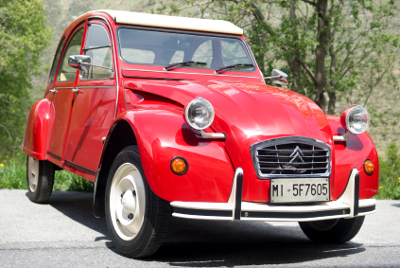Citroen Car
Category: Automotive History

History and facts about Citroen Automobiles. The Citroen Car is a leading automobile manufacturer in France, which has been a division of the PSA Peugeot Citroen group since 1976. The business has earned a status for modernism and radical engineering, which is mirrored in the motto of the company "Créative Technologie". Citroën received several global awards, such as Car of the Year awards – one time in the United States, 3 times in Europe and Ireland, 8 times in Italy and 9 times in Spain. The brand commemorated its 90th Anniversary during 2009.
Citroen Automobile History and Information
André Citroën, a French industrialist, constructed armaments for France during the First World War. However, subsequent to the war, except he planned in advance, he discerned that he would have a contemporary industrial unit without merchandise. There was not anything automatic regarding the decision to turn out to be an automobile manufacturer previously the war was ended, but the auto-trade was one that Citroën recognized well, owing to a successful 6-year period of functioning with Mors, an automobile factory, between 1908 and the eruption of war.
The decision André Citroën to change to automobile developing was obviously taken during the first part of 1916, which is when André Citroën asked Louis Dufresne, an engineer formerly with Panhard, a producer of light strategic and armed vehicles in France, to plan a technically sophisticated vehicle for which he could employ for his plant once serenity broke out. However, long before that occurred, he had customized his dream, and determined that the best post war chances in auto-manufacture would entail a lighter automobile of high quality, but made in enough amounts to be priced enticingly.
During February 1917, Citroën called one more engineer, Jules Salomon, who previously had a substantial status in the French automotive division as the maker. The mandate of Citroën was to create an all-new design for a 10 horsepower automobile that would be better prepared, healthier and less expensive to make than any competing product at the time. The outcome was the Type A, declared to the press, just four months following the guns fell soundlessly, during March 1919.
The first manufacture of Type A vehicle emerged from the plant during the last part of May, and during June it was displayed in a retail area in the Champs-Élysées that usually sold Alda vehicles. Citroën convinced Fernand Charron, the proprietor of the Alda Company, to lend him the retail area. On the 7th of July 1919, the first consumer received an innovative Citroën 10 horsepower Type A vehicle. In 1919, André Citroën discussed with General Motors in brief on a planned sale of the Citroën business to General Motors. The transaction nearly came to an end, but General Motors ultimately determined that its administration and investment would be excessively overstretched by the occupation. Thus, Citroën remained autonomous until 1935.
During 1924, Citroën started a business association with Edward G. Budd, an American engineer, who had worked to construct stainless steel bodies for railroad vehicles, particularly for the Pullman vehicles. During October 1924, Citroën unveiled the Citroën B10 model vehicle at the Paris Motor exhibition. The vehicle was the first all-steel body automobile in Europe. These model cars were initially sold successfully in the market, but shortly contestants introduced innovative body designs. However, Citroën did not revamp the bodies of his vehicles, but still his cars sold in huge quantities despite no modifications done on their body design. However, the low price of the car was the major selling point and Citroën experienced huge losses.
During 1927, the bank Lazard, which is a financial advice-giving and asset administration business, assisted Citroën by introducing new, much-required funds, including through renegotiating its liability.
During December 1934, in spite of the support of the Michelin Company, Citroën filed for insolvency. Within one month, Michelin, previously the largest creditor of the business became its principal shareholder.
All Facts are based on our research, always check lookseek facts in case of any errors. Lookseek is not responsible for any mistakes in this article.

 Back To Category Automotive History
Back To Category Automotive History